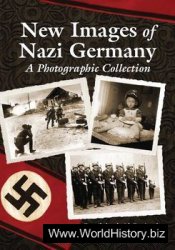Michael I Rabo (“the Great”), Syrian Orthodox (Jacobite) patriarch of Antioch, was the author of a universal chronicle in Syriac dealing with the history of the world up to 1195, and renowned as a reformer of the Syrian Orthodox Church.
Born in Melitene (mod. Malatya, Turkey), Michael was educated nearby in the famous monastery of Mor Barsaumo, where he remained as monk and prior until he was elected patriarch in 1166. In the interests of his church and community, Michael balanced his relations with the warring parties in the area of his jurisdiction. Especially in the first half of his patriarchate, he was accepted as a frequent visitor in Frankish Antioch (mod. Antakya, Turkey), with the consent of the Byzantine emperor Manuel Kom-nenos, in spite of the opposition of the Greek Orthodox community there. He visited Jerusalem several times and was invited to take part in the Third Lateran Council (1179) but declined. The second half of Michael’s patriarchate was overshadowed by the election of an anti-patriarch (Theodor bar Wahbun, d. 1193) in 1180. Michael was buried in his newly built church in Mor Barsaumo.
Michael’s canonistic work is partly conserved in later collections, but the greater part is lost, as is a treatise on dualist heresies composed for the Lateran Council. He also composed liturgical and epic works and collected ancient theological and historical sources, which he utilized for his monumental world chronicle. This original, coherent chronography is an exegesis of the spiritual meaning of historical change, which relates the age of the crusades from a well-informed and independent point of view. Books 15-21 deal with the period from the 1090s up to 1195/1196, although considerable parts of this section are lost, especially from books 18 and 19. The material is divided into three synchronic columns in chronological order: For the period of concern here, the first, representing the succession of Syrian Orthodox and Coptic patriarchs and metropolitans and the most prominent Syrian Orthodox scholars of theology, is juxtaposed with the second, which outlines the worldly empires, that is the secular rule of the Byzantines, Turks, Armenians, and Franks. The third column comprises notes about other churches (mainly the Armenian, Latin, and Greek Orthodox), as well as matters of regional concern to the Syrian Orthodox population, including notes about earthquakes, food prices, and religious matters. Here the author reveals systematic interest in matters of Latin Church organization and history; of special importance are his notes about the Latin patriarch of Antioch, Aimery of Limoges (1141-1196). The chronicle was adapted into Armenian in 1246-1247.
-Dorothea Weltecke
Bibliography
Chronique de Michel le Syrien, Patriarche Jacobite d’Antioche (1166-1199), ed. and trans. Jean-Baptiste Chabot, 5 vols. (Paris: Leroux, 1899-1924).
Schmidt, Andrea B, “Die zweifache Rezension der Chronik Michaels des Grofien,” Le Museon 109 (1996), 299-319.
The Synodicon in the West-Syrian Tradition, ed. and trans. A. Voobus, 2 vols. (Leuven: Peeters, 1974-1976).
Weltecke, Dorothea, Die “Beschreibung derZeiten” von Mor Michael dem Grofien (1126-1199): Eine Studie zu ihrem historischen und historiographiegeschichtlichen Kontext (Leuven: Peeters, 2003).




 World History
World History









